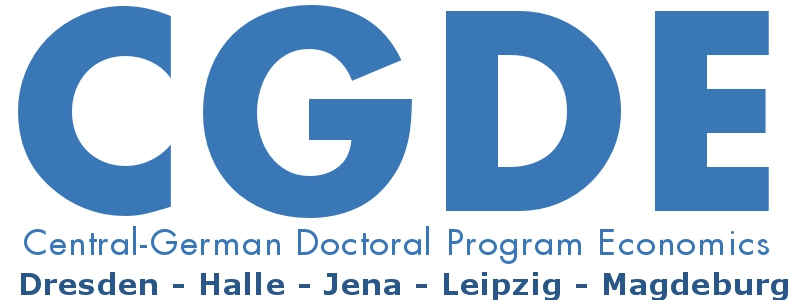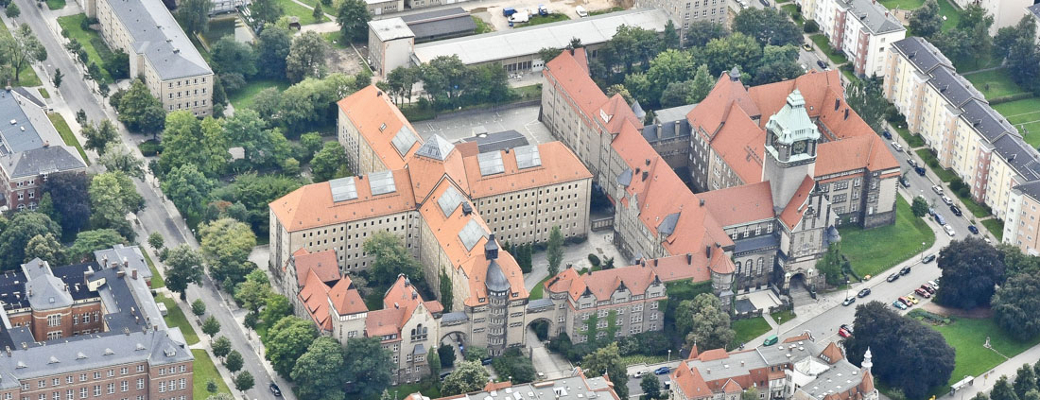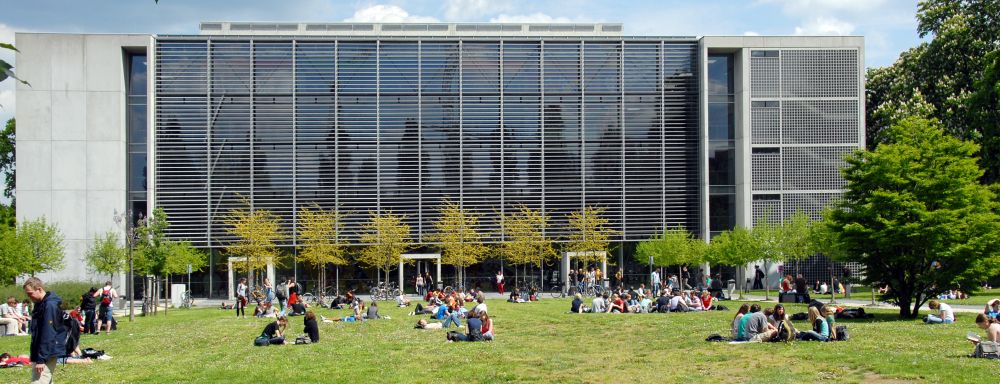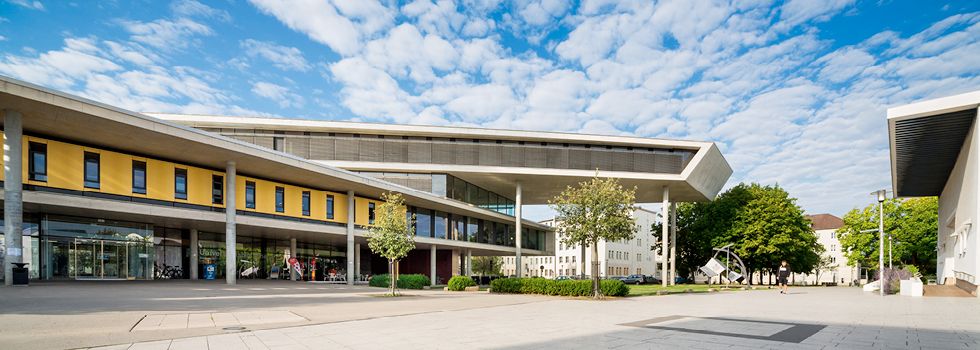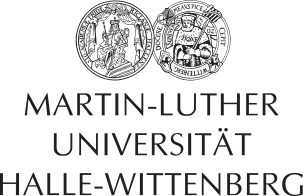Migration and Local Labor Markets
Lecturer: Professor Jan Stuhler (Universidad Carlos III de Madrid)
Date: March 21-24, 2022
Venue: Otto von Guericke University Magdeburg
Registration: until February 28, 2022 via email to gina.gierk@ovgu.de. The course is designed for at most 25 participants.
Logistics
The lecture format will be online. Lectures will be split into three sessions per day, at
• 14:30-16:00
• 16:15-17:45
• 18:30-20:00
The Zoom link will be shared directly with participants.
Announcement: pdf
Course Description
How do local labor markets adjust to economic shocks, and what can we learn from those adjustments about the overall functioning of labor markets? To answer such questions, researchers often study variation in economic shocks across areas. This “area approach” is becoming the dominant empirical approach in many economic literatures, and has led to breakthrough findings on important questions. However, the approach also has short- comings in implementation and interpretability, and key questions on the functioning of labor markets remain unanswered.
In this course, we study recent empirical work on local adjustments to economic shocks, with a particular focus on the labor market effects of immigration. We further cover related work on the labor market effect of labor demand shocks, trade shocks, fiscal multipliers and regulation.
Empirically, we study common implementations of the area approach as well as “shift share” instrumental variable estimators, which are often used in this context. Theoretically, we compare classic factor proportions and monopsonistic models, and the different margins of adjustment via which local labor markets may adjust.
Evaluation
Participants have the option to complete a take-home exam. The date for this exam will be decided in class (depending on students’ availability).
References
The course is structured around empirical papers, in particular the main papers listed below. Lecture slides will be made available via Dropbox. Cahuc, Carcillo and Zylberberg (2014, or previous edition) or Borjas’ “Labor Economics” are useful background readings.
Topics
The course is divided into four modules. The outline of each module is given below.
1 Area Studies and Shift-share Instrumental Variables
1.1 Main Papers
• Adao, Rodrigo, Michal Kolesár, and Eduardo Morales. 2019. “Shift-share Designs: Theory and Inference.” The Quarterly Journal of Economics, 134(4): 1949–2010.
• Bartik, Timothy J. 1991. Who Benefits from State and Local Economic Development Policies? Books from Upjohn Press, W.E. Upjohn Institute for Employment Research.
• Borusyak, Kirill, Peter Hull, and Xavier Jaravel. 2022. “Quasi-Experimental Shift- Share Research Designs.” The Review of Economic Studies, 89(1): 181–213.
1.2 Useful References
• Amior, Michael, and Alan Manning. 2018. “The Persistence of Local Joblessness.” American Economic Review, 108(7): 1942–70.
• Borusyak, Kirill, and Peter Hull. 2022. “Non-Random Exposure to Exogenous Shocks.” Working Paper.
• Goldsmith-Pinkham, Paul, Isaac Sorkin, and Henry Swift. 2020. “Bartik Instruments: What, When, Why, and How.” American Economic Review, 110(8): 2586–2624.
• Helm, Ines. 2020. “National Industry Trade Shocks, Local Labor Markets and Agglomeration Spillovers.” The Review of Economic Studies.
• Jaeger, David A., Joakim Ruist, and Jan Stuhler. 2018. “Shift-Share Instruments and the Impact of Immigration.” National Bureau of Economic Research Working Paper 24285.
• Moretti, Enrico. 2011. “Local Labor Markets.” In Handbook of Labor Economics. Vol. 4 of Handbook of Labor Economics, ed. O. Ashenfelter and D. Card, Chapter 14, 1237–1313. Elsevier.
• Topel, Robert H. 1986. “Local Labor Markets.” Journal of Political Economy, 94(3): pp. S111–S143.
2 Migration
2.1 Main Papers
• Amior, Michael and Jan Stuhler. 2022. “The Impact of Migration Under Monopsony: Evidence from Germany”, Working Paper.
• Borjas, George J. 1999. “The Economic Analysis of Immigration.” In Handbook of Labor Economics. Vol. 3 of Handbook of Labor Economics, , ed. O. Ashenfelter and D. Card, Chapter 28, 1697–1760. Elsevier.
• Borjas, George J. 2003. “The Labor Demand Curve is Downward Sloping: Re- examining the Impact of Immigration on the Labor Market*.” Quarterly journal of Economics, 118(4): 1335–1374.
• Borjas, George. 2013. “The Analytics of the Wage Effect of Immigration.” IZA Journal of Migration, 2(1): 22.
• Card, D. 1990. “The Impact of the Mariel Boatlift on the Miami Labor Market.” Industrial and Labor Relations Review, 245–257.
• Dustmann, Christian, Uta Schönberg, and Jan Stuhler. 2016. “The Impact of Immigration: Why Do Studies Reach Such Different Results?” Journal of Economic Perspectives, 30(4): 31–56.
• Dustmann, Christian, Uta Schönberg, and Jan Stuhler. 2017. “Labor Supply Shocks, Native Wages, and the Adjustment of Local Employment.” The Quarterly Journal of Economics, 132(1): 435–483.
2.2 Useful References
• Albert, Christoph. 2021. “The Labor Market Impact of Immigration: Job Creation versus Job Competion.” American Economic Journal: Macroeconomics, 13(1): 35–78.
• Amior, Michael, and Alan Manning. 2020. “Monopsony and the Wage Effects of Migration.” CEP Discussion Paper No 1690.
• Angrist, Joshua D., and Adriana D. Kugler. 2003. “Protective or Counter-productive? Labour Market Institutions and the Effect of Immigration on EU Natives.” Economic Journal, 113(488): F302–F331.
• Beerli, Andreas, Jan Ruffner, Michael Siegenthaler, and Giovanni Peri. 2021. “The Abolition of Immigration Restrictions and the Performance of Firms and Workers: Evidence from Switzerland.” American Economic Review, 111(3): 976–1012.
• Borjas, George J., Richard B. Freeman, and Lawrence F. Katz. 1997. “How Much Do Immigration and Trade Affect Labor Market Outcomes?” Brookings Papers on Economic Activity, 28(1): 1–90.
• Borjas, George J., Jeffrey Grogger, and Gordon H. Hanson. 2012. “Comment: On Estimating Elasticities Of Substitution.” Journal of the European Economic Association, 10(1): 198–210.
• Borjas, George J. 2017. “The Wage Impact of the Marielitos: A Reappraisal.” ILR Review, 70(5): 1077– 1110.
• Card, D. 2001. “Immigrant Inflows, Native Outflows, and the Local Labor Market Impacts of Higher Immigration.” Journal of Labor Economics, 19(1): 22–64.
• Chassambouli, Andri, and Giovanni Peri. 2015. “The Labor Market Effects of Reducing the Number of Illegal Immigrants.” Review of Economic Dynamics, 18(4): 792–821.
• Clemens, Michael A., Ethan G. Lewis, and Hannah M. Postel. 2018. “Immigration Restrictions as Active Labor Market Policy: Evidence from the Mexican Bracero Exclusion.” American Economic Review, 108(6): 1468–87.
• Cohen-Goldner, Sarit, and M. Daniele Paserman. 2011. “The Dynamic Impact of Immigration on Natives’ labor market Outcomes: Evidence from Israel.” European Economic Review, 55(8): 1027–1045.
• Delgado-Prieto, Lukas. 2021. “Immigration, Wages and Employment under Informal Labor Markets.” Working Paper.
• Dustmann, Christian, and Ian Preston. 2012. “Comment: Estimating the Effect of Immigration on Wages.” Journal of the European Economic Association, 10(1): 216–223.
• Edo, Anthony. 2019. “The Impact of Immigration on Wage Dynamics: Evidence from the Algerian independence war.” Journal of the European Economic Association.
• Hunt, Jennifer. 1992. “The Impact of the 1962 Repatriates from Algeria on the French Labor Market.” Industrial and Labor Relations Review, 45(3): 556–572.
• Jaeger, David A., Joakim Ruist, and Jan Stuhler. 2018. “Shift-Share Instruments and the Impact of Immigration.” National Bureau of Economic Research Working Paper 24285.
• Lewis, Ethan. 2011. “Immigration, Skill Mix, and Capital Skill Complementarity.” The Quarterly Journal of Economics, 126(2): 1029–1069.
• Llull, Joan. 2018. “Immigration, Wages, and Education: A Labour Market Equilibrium Structural Model.” The Review of Economic Studies, 85(3): 1852–1896.
• Manacorda, Marco, Alan Manning, and Jonathan Wadsworth. 2012. “The Impact Of Immigration On The Structure Of Wages: Theory And Evidence From Britain.” Journal of the European Economic Association, 10(1): 120–151.
• Monras, Joan. 2020. “Immigration and Wage Dynamics: Evidence from the Mexi- can Peso Crisis.” Journal of Political Economy, 128(8): 3017–3089.
• Ottaviano, Gianmarco I. P., and Giovanni Peri. 2012. “Rethinking The Effect Of Immigration On Wages.” Journal of the European Economic Association, 10(1): 152–197.
• Peri, Giovanni, and Chad Sparber. 2009. “Task Specialization, Immigration, and Wages.” American Economic Journal: Applied Economics, 1(3).
3 Labor Demand Shocks
3.1 Main Papers
• Amior, Michael, and Alan Manning. 2018. “The Persistence of Local Joblessness.” American Economic Review, 108(7): 1942–70.
• Bartik, Timothy J. 1991. Who Benefits from State and Local Economic Development Policies? Books from Upjohn Press, W.E. Upjohn Institute for Employment Research.
• Blanchard, Olivier Jean, and Lawrence F. Katz. 1992. “Regional Evolutions.” Brookings Papers on Economic Activity, 23(1): 1–76.
• Carrington, William J. 1996. “The Alaskan Labor Market during the Pipeline Era.” Journal of Political Economy, 104(1): 186–218.
• Moretti, Enrico. 2011. “Local Labor Markets.” In Handbook of Labor Economics. Vol. 4 of Handbook of Labor Economics, ed. O. Ashenfelter and D. Card, Chapter 14, 1237–1313. Elsevier.
• Yagan, Danny. 2019. “Employment Hysteresis From the Great Recession.” Journal of Political Economy, 127(5): 000–000.
3.2 Useful References
• Adhvaryu, Achyuta, A. V. Chari, and Siddharth Sharma. 2012. “Firing Costs and Flexibility: Evidence from Firms’ Employment Responses to Shocks in India.” The Review of Economics and Statistics, 95(3): 725–740.
• Bentolila, Samuel, Marcel Jansen, and Gabriel Jiménez. 2018. “When Credit Dries Up: Job Losses in the Great Recession.” Journal of the European Economic Asso- ciation, 16(3): 650–695.
• Greenaway-McGrevy, Ryan, and Kyle K. Hood. 2016. “Worker Migration or Job Creation? Persistent Shocks and Regional Recoveries.” Journal of Urban Economics, 96(C): 1–16.
• Hershbein, Brad, and Bryan A Stuart. 2020. “Recessions and Local Labor Market Hysteresis.”
• Kline, Patrick. 2008. “Understanding Sectoral Labor Market Dynamics: An Equilibrium Analysis of the Oil and Gas Field Services Industry.” Working Paper.
• Manning, Alan, and Barbara Petrongolo. 2017. “How Local Are Labor Markets? Evidence from a Spatial Job Search Model.” American Economic Review, 107(10): 2877–2907.
• Monte, Ferdinando, Stephen J Redding, and Esteban Rossi-Hansberg. 2018. “Commuting, Migration, and Local Employment Elasticities.” American Economic Review, 108(12): 3855–90.
• Monras, Joan. 2018. “Economic Shocks and Internal Migration.” Working Paper.
• Mian, Atif, and Amir Sufi. 2014. “What Explains the 2007–2009 Drop in Employment?” Econometrica, 82(6): 2197–2223.
• Notowidigdo, Matthew J. 2020. “The Incidence of Local Labor Demand Shocks.” Journal of Labor Economics, 38(3): 687–725.
• Topel, Robert H. 1986. “Local Labor Markets.” Journal of Political Economy, 94(3): pp. S111–S143.
4 Trade Shocks, Multipliers and other Applications
4.1 Main Papers
• Autor, David, David Dorn, and Gordon H. Hanson. 2016. “The China Shock: Learning
from Labor-Market Adjustment to Large Changes in Trade.” Annual Re- view of Economics, 8: 205–240.
• Feler, Leo, and Mine Z. Senses. 2017. “Trade Shocks and the Provision of Local Public Goods.”
American Economic Journal: Economic Policy, 9(4): 101–43.
• Helm, Ines. 2020. “National Industry Trade Shocks, Local Labor Markets and Agglomeration
Spillovers.” The Review of Economic Studies.
• Nimczik, Jan Sebastian. 2020. “Job Mobility Networks and Data-driven Labor Markets.” Working Paper.
• Serrato, Juan Carlos Suárez, and Philippe Wingender. 2014. “Estimating Local Fiscal Multipliers.” Working Paper.
4.2 Useful References
• Acemoglu, Daron, and Pascual Restrepo. 2020. “Robots and Jobs: Evidence from US Labor Markets.” Journal of Political Economy, 128(6): 2188–2244.
• Albert, Christoph, and Joan Monràs. 2019. “The Regional Impact of Economic Shocks: Why immigration is Different from Import Competition.” Universitat Pompeu Fabra Economics Working Papers 1758.
• Autor, David H., and David Dorn. 2013. “The Growth of Low-Skill Service Jobs and the Polarization of the US Labor Market.” American Economic Review, 103(5): 1553–97.
• Autor, David H., Alan Manning, and Christopher L. Smith. 2016. “The Contribution of the Minimum Wage to US Wage Inequality over Three Decades: A Reassessment.” American Economic Journal: Applied Economics, 8(1): 58–99.
• Bloom, Nicholas, Mirko Draca, and John Van Reenen. 2016. “Trade Induced Technical Change? The Impact of Chinese Imports on Innovation, IT and Productivity.” The Review of Economic Studies, 83(1): 87–117.
• Cengiz, Doruk, Arindrajit Dube, Attila Lindner, and Ben Zipperer. 2019. “The Effect of Minimum Wages on Low-Wage Jobs.” Quarterly Journal of Economics, 134(3).
• Dauth, Wolfgang, Sebastian Findeisen, and Jens Suedekum. 2017. “Trade and Manufacturing Jobs in Germany.” American Economic Review, 107(5): 337–342.
• Dauth, Wolfgang, Sebastian Findeisen, Jens Suedekum, Nicole Woessner, et al. 2018. “Adjusting to Robots: Worker-level Evidence.” Opportunity and Inclusive Growth Institute Working Papers, 13.
• Dix-Carneiro, Rafael, and Brian K. Kovak. 2017. “Trade Liberalization and Regional Dynamics.” American Economic Review, 107(10): 2908–46.
• Meer, Jonathan, and Jeremy West. 2016. “Effects of the Minimum Wage on Employment Dynamics.” Journal of Human Resources, 51(2): 500–522.
